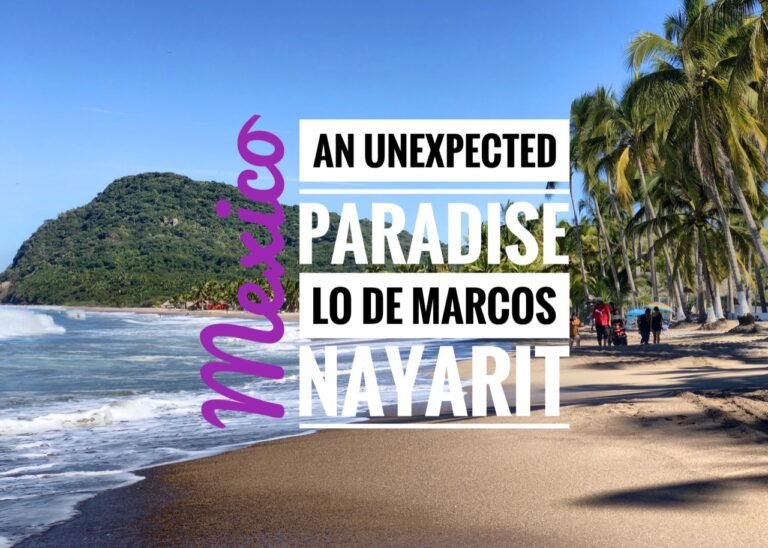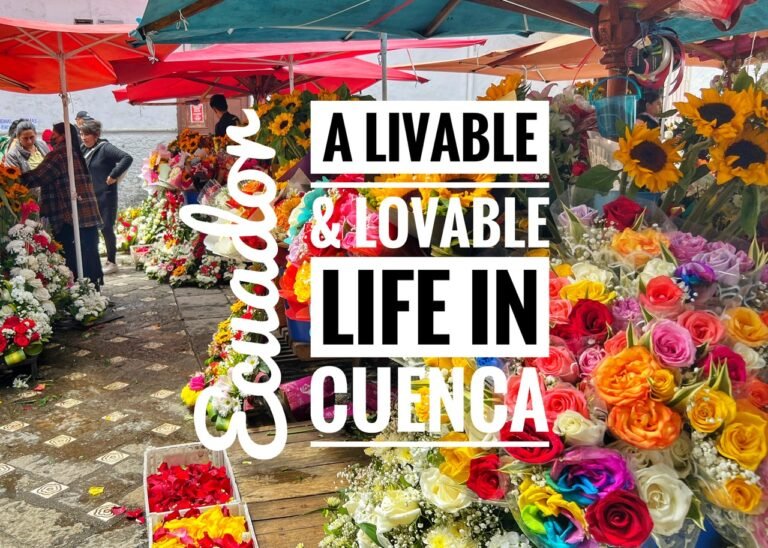
Kuala Lumpur is modern. It’s sleek. It’s sprawling. It’s loaded with delectable food options…and wow, were we glad to get there. We left Arambol at 6 pm on January 31 and arrived to our place in Kuala Lumpur at 3 am on February 2. That’s right. 33 hours in transit for a mere 1656 miles. Our plane was unexpectedly rescheduled in Bangalore so we had a 15 hour delay.
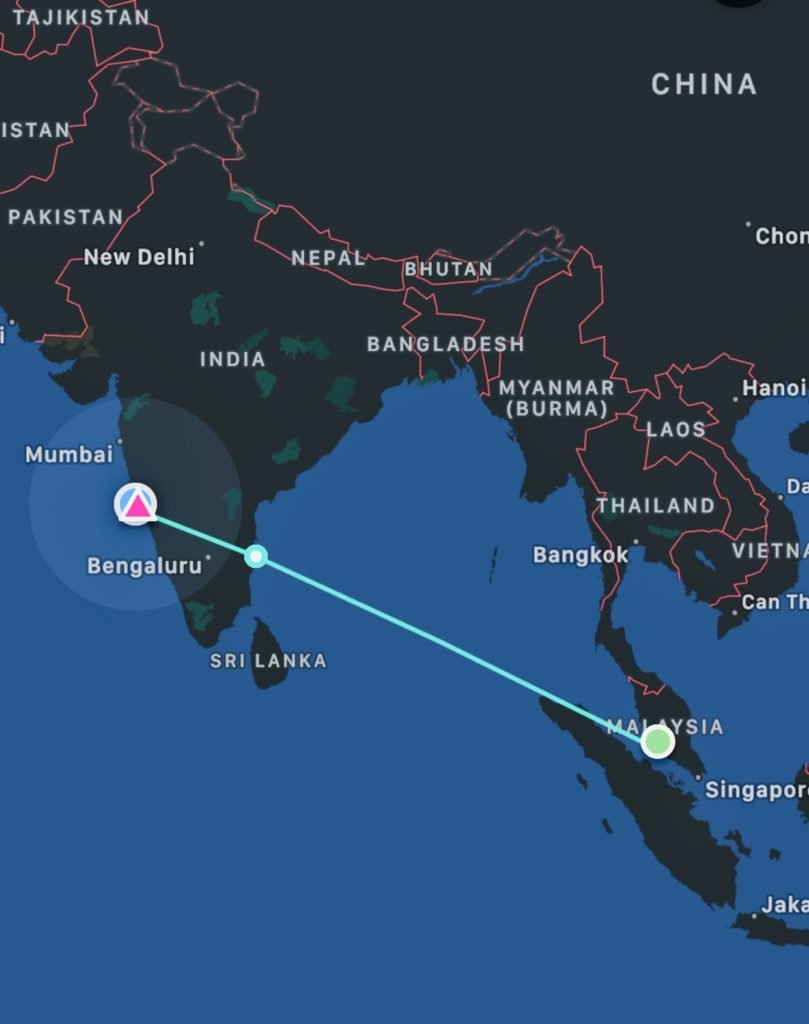
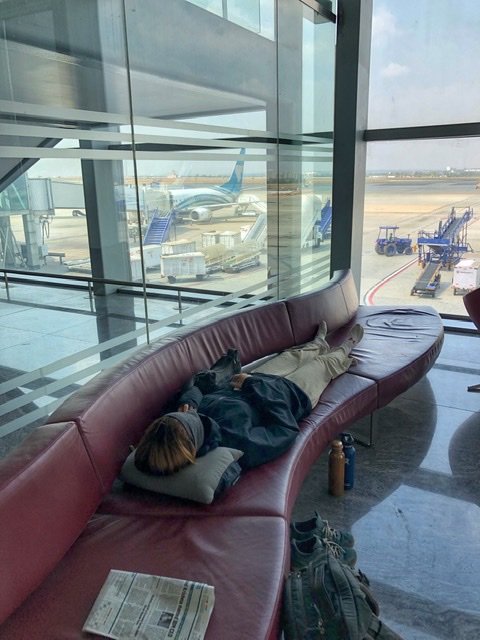
Fortunately, they had lots of cozy napping couches and lots of expensive restaurants to burn our money in.
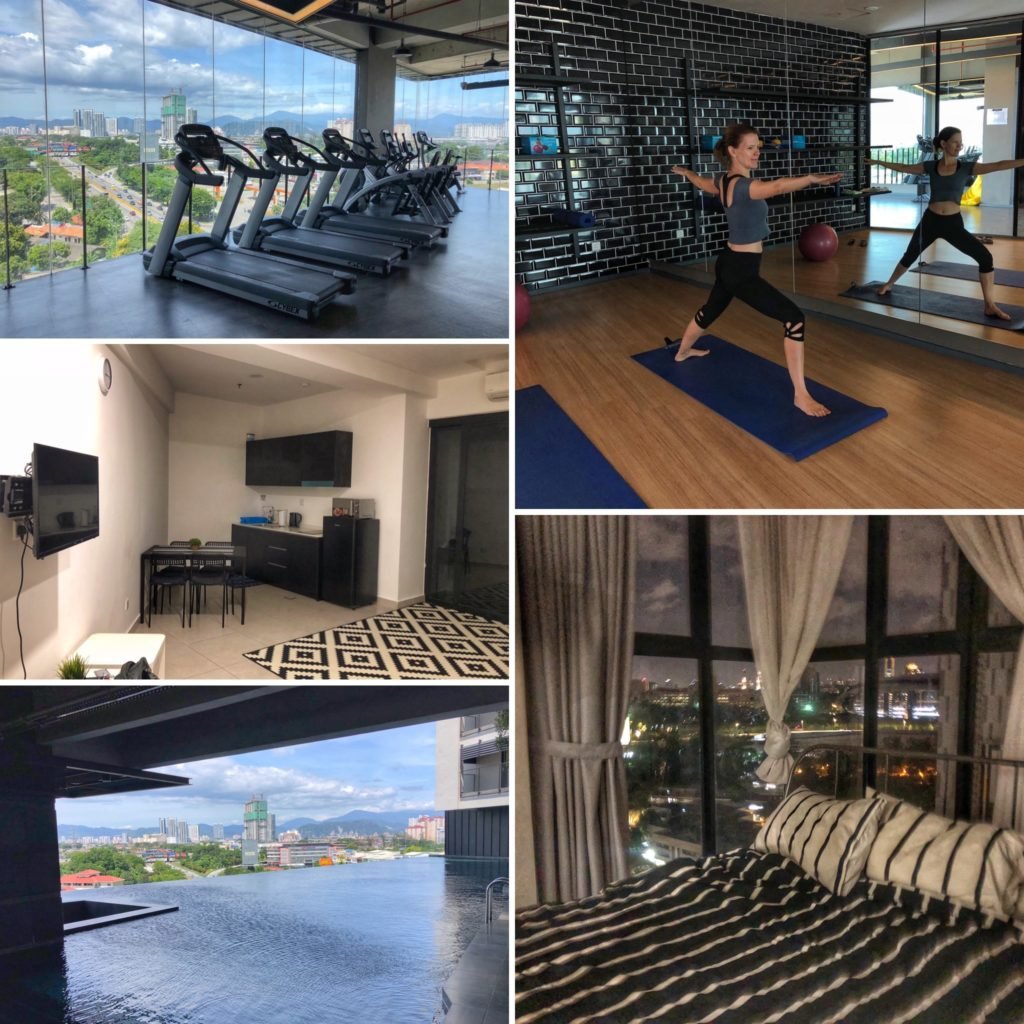
Needless to say, we were more than happy to be enveloped into our 20th floor high rise luxury apartment in KL, which featured a roof top infinity pool, gym, sauna, and even a yoga room just for Mandy. Not to mention our first washer & dryer in six months. All for the mere price of $21/night. Happy dance ?
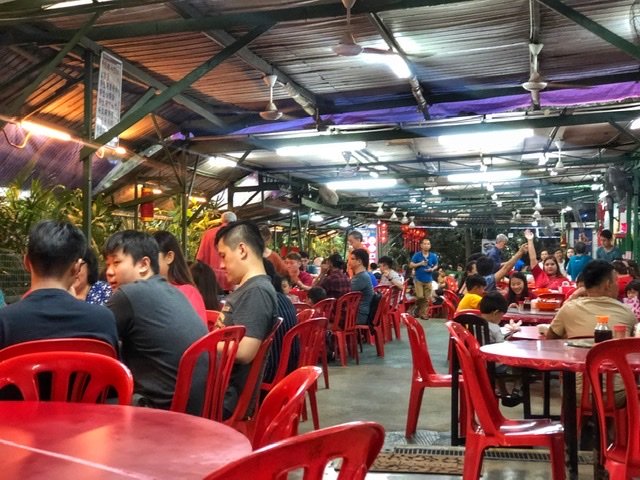
Once we recovered from our 33 hours of travel fun, we were ready to venture out. It was wonderful to be welcomed to our new destination, Kuala Lumpur by Mandy’s hometown friends, Jeramy and Allison, who have been living and working in KL for the last 18 months. They took us to Restaurant Siu Siu which was a very authentic Malay/Chinese joint packed to the brim with locals celebrating Chinese New Year.
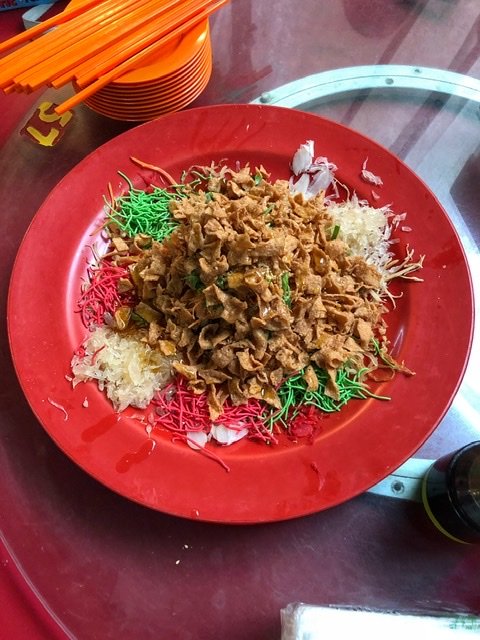
The meal started with Yee Sang, which is a speciality item only available during CNY. Both Malaysians and Singaporeans have laid claim to this dish. It’s essentially a salad composed of fresh and preserved vegetables, livened up with crackers, crunchy seeds, sweet and salty sauces, and a festive plume of spice. It’s custom for everyone to stand around the salad and mix it with chopsticks. We had four kids in our group making this extra messy and extra fun!
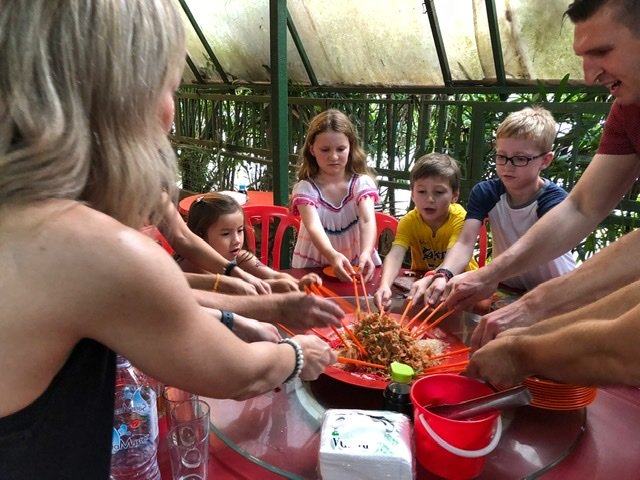
If you’ve never been told not to play with your food, this doesn’t apply in this instance! Everyone stands around and at the count of three, the food goes flying during the “prosperity toss.” Apparently, the higher you toss the salad, the better. Flying food is a sign of good luck for the year ahead!
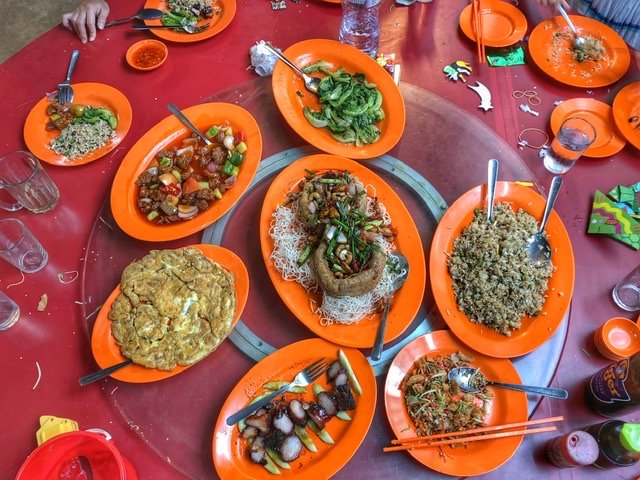
We were lucky because Allison and Jeramy’s neighbor, Pacey, also attended and being part Malay, she was able to order everything for us. This was incredibly helpful considering no English was to be found or spoken! She did excellent because everything we put in our mouths that night was absolutely delicious. We don’t know exactly what it all was, but it included bok choy, spiced veggies and crispy noodles inside taro root, pork slices, stir fry with sweet and sour sauce, and rice. Omg. Amazing.
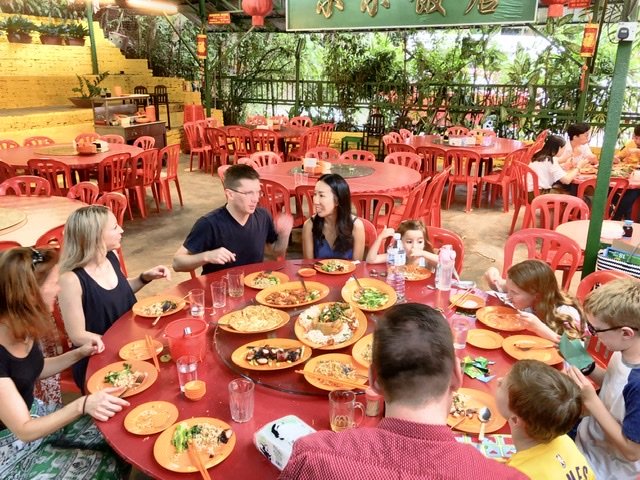
And of course, it wouldn’t be complete without a lazy Susan in the middle!
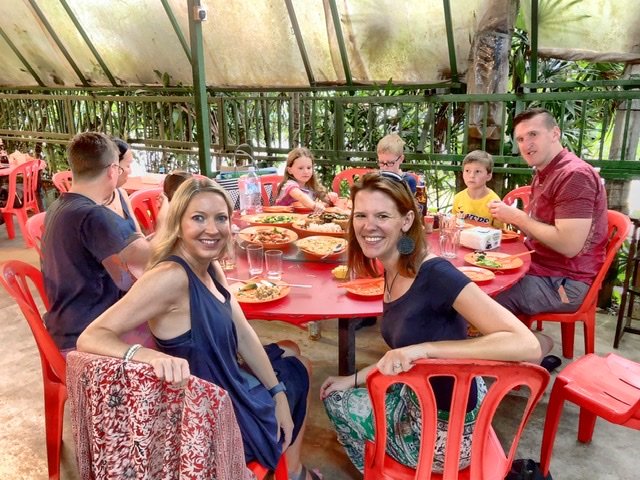
Mandy and Allison have known each other since fourth grade!
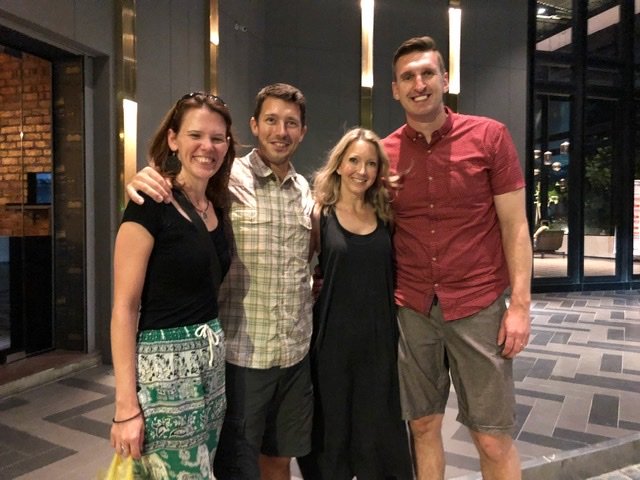
The four of us in front of our place.
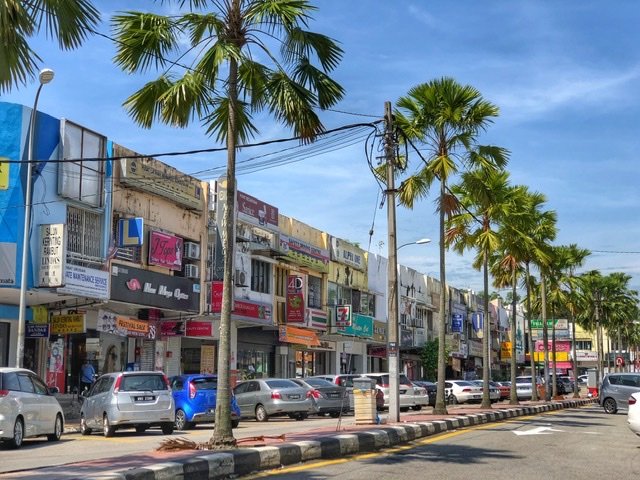
Bangsar Neighborhood
The following day we explored the Bangsar neighborhood, which is a chic area where many expats live and where we decided to go for a dermatologist check-up for $12/each. Malaysia has top notch medical facilities so it seemed like a good place to do so. Everything checked out positive!
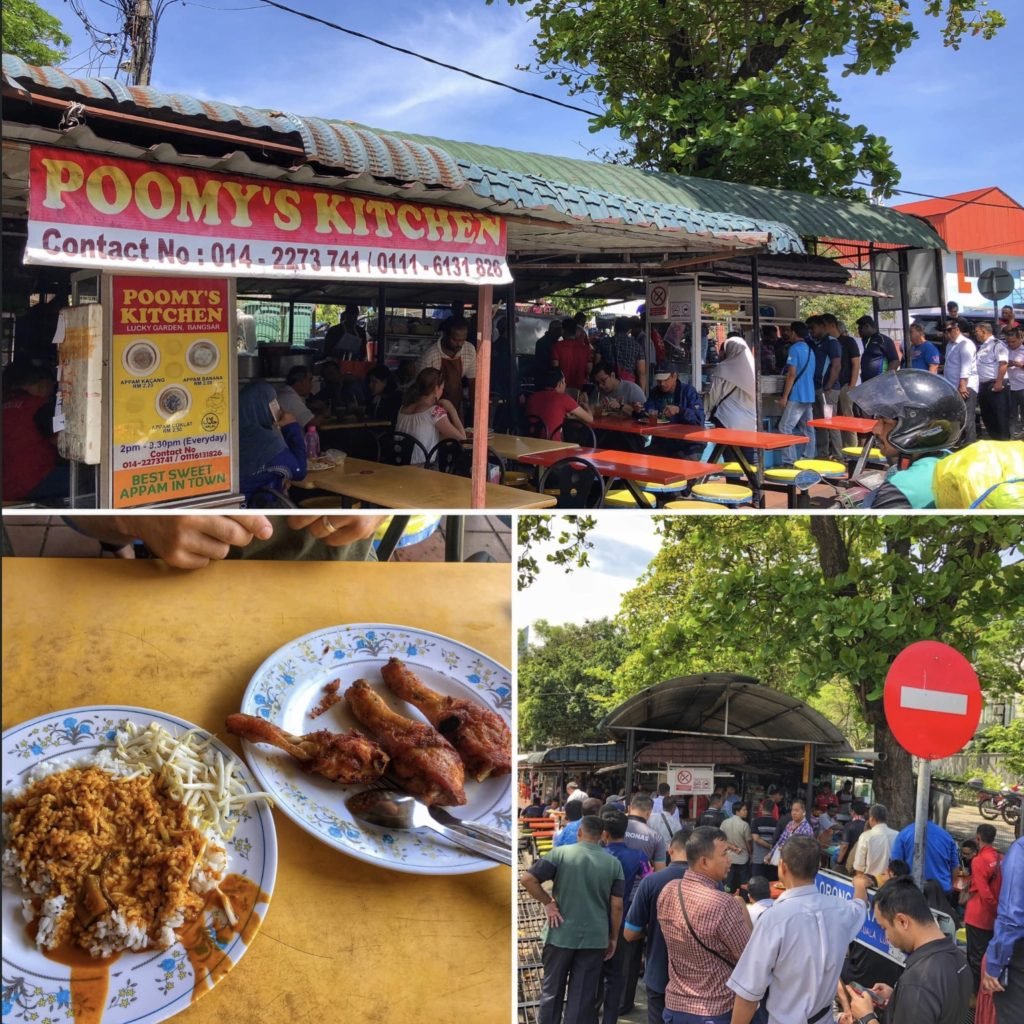
Seeking the local experience in Bangsar at Poomy’s Kitchen we waited in a long line knowing the crowd was a good sign. It was. Poomy’s is one of a thousands of hawker (street food) stalls in KL. This town is made for the food curious. You will have a good time here!
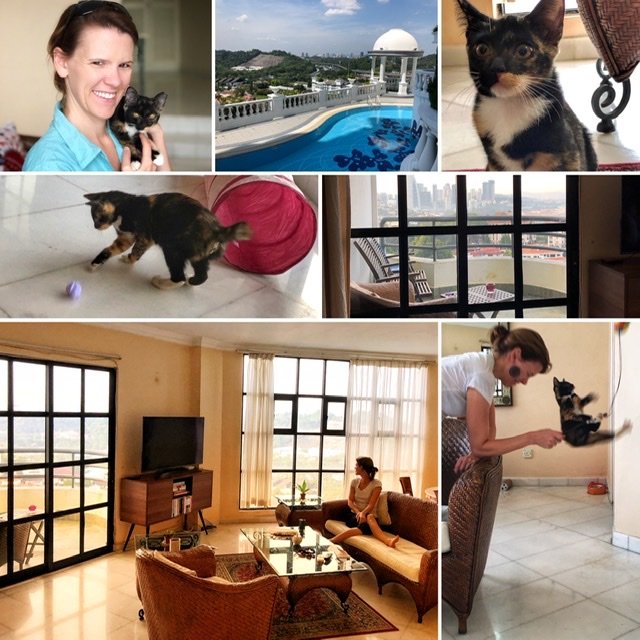
Also in Bangsar, life in Kuala Lumpur got even more inviting when we scored a house and cat sit. Free two bedroom accommodation, killer view of the KL city skyline, a pool, and totally irresistible kitten Sunny… YES, PLEASE!

Kuala Lumpur is blanketed with skyscrapers at every turn. It has undergone massive development in the last two decades making it one of the cultural, financial and economic centers of SE Asia. Everything feels clean, organized and super modern.
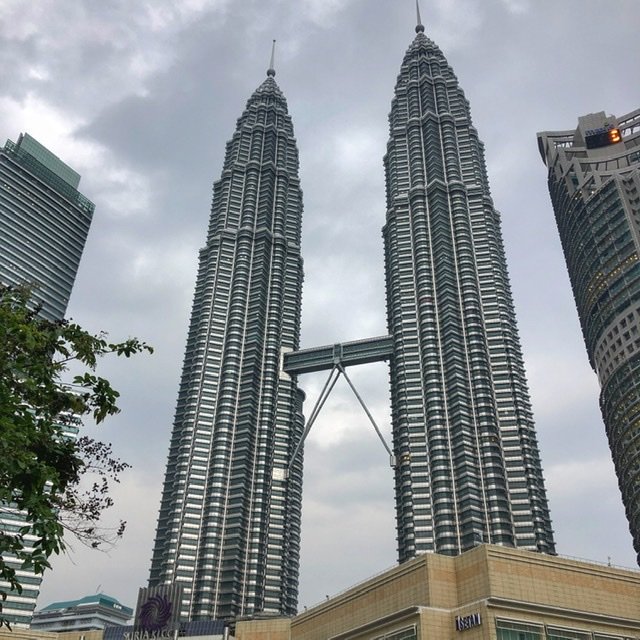
Petronas Towers
Arguably the most iconic image of Malaysia, and certainly of Kuala Lumpur, is the Petronas Twin Towers. The impressive stainless steel towers sparkle above KL’s historic treasures and offer a mesmeric allure amongst KL’s skyscrapers which are quite indicative of SE Asia’s metropolitan growth in the 21st Century.
At one point this dynamic duo was the tallest in the world at 452 meters (1482”) or 88 stories and remain the world’s largest twin towers. The design is based on an eight-sided star of arabesque patterns. Other Islamic influences can be found in the five tiers of the structure which represent the five pillars of Islam. You can walk across the sky bridge between the two towers on the 41st floor.
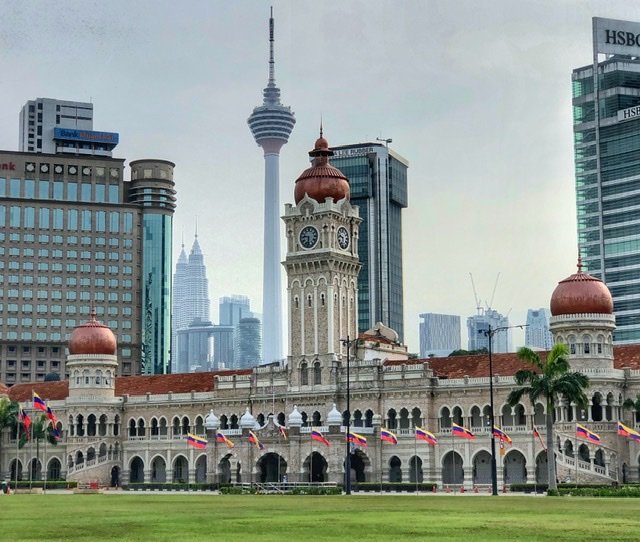
KLCC Historic Center
What a contrast between the Sultan Abdul Samad building and the Menara KL Tower. The Sultan Abdul brick building with Moorish domes was built in 1897 and named after the Sultan of Selangor. It flanks Merdaka Square which is where Malaysia declared independence in 1957. The tower at 421m (1381’) is the tallest telecommunications tower in SE Asia. Here you can grab a tea or dinner on the revolving restaurant if you’re interested in taking in the view. Our budget, naturally did not allow such revolutions.

Another view of the Sultan Abdul Samad.

The Masjid James Mosque meets at the confluence of the Gombak and Klang rivers.
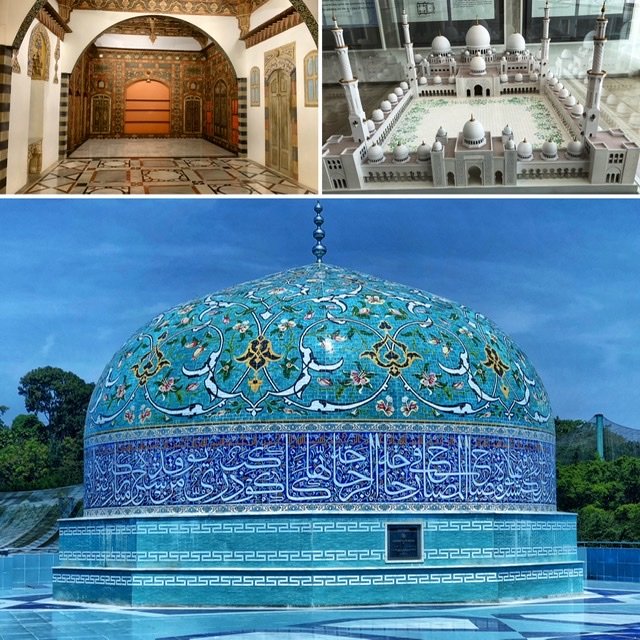
Islamic Arts Museum
The Islamic Arts Museum displays one of the best collections of Islamic decorative arts in the world. The beautiful dome is on the roof of the museum.
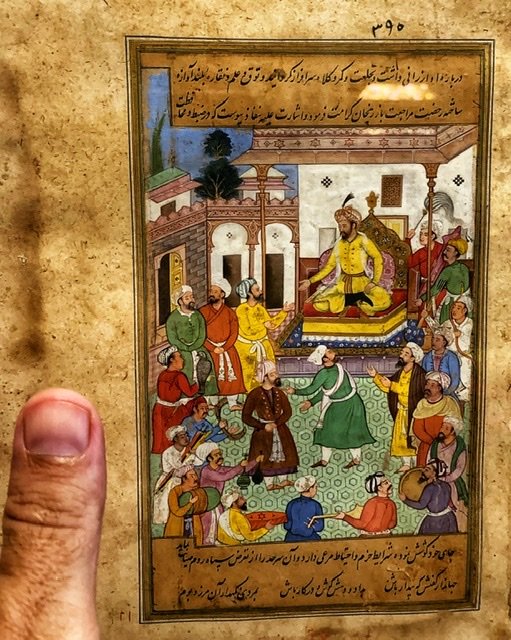
This includes incredible Indian miniature paintings, most were painted in 9th century India. Greg’s thumb here is used for scale… it’s incomprehensible how the artists were able to achieve this level of minuscule detail! Zoom in and take a look at the wisps of hair of the men’s beards or mustaches, or the folds in their turbans.
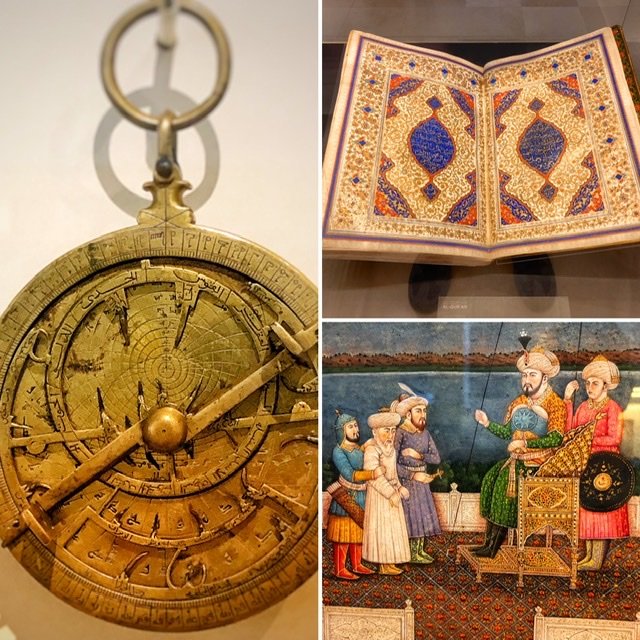
The leftmost item is an Astrolabe. Never heard of it? Us either, but it is a remarkably sophisticated and rare piece of ancient technology used in Muslim Spain in the year 1040 AD to find celestial objects in the sky, determine sunrise and sunset, and tell time during night and day. Upper right is a truly strikingly beautiful 11th century Quran. Bottom right another unbelievably intricate Indian miniature painting.
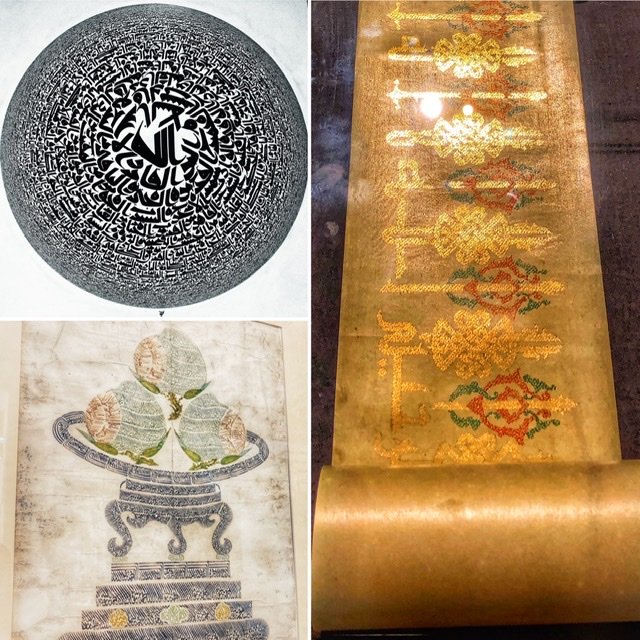
Also on display at the Islamic Arts Museum were some remarkable examples of calligraphy… zoom in to see the minuscule script. The two paintings on the left show how calligraphy is used to paint a picture and the picture to the right is an astounding near microscopic calligraphy within calligraphy scroll.
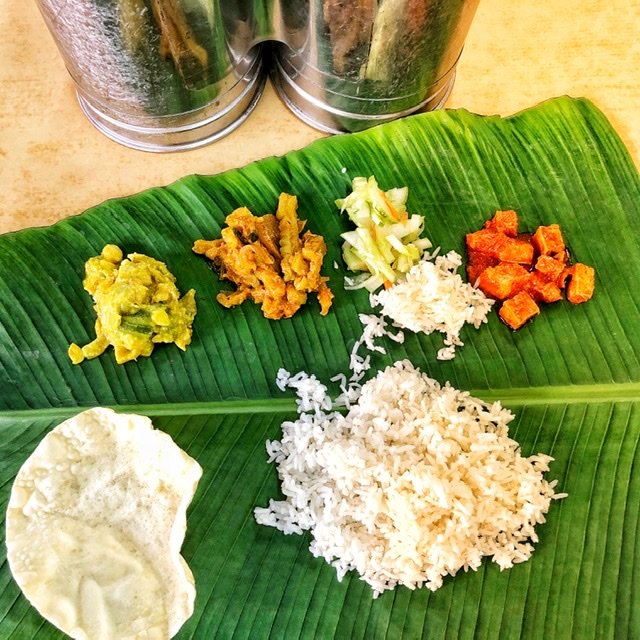
Food, Food, Food
Who needs a wasteful plate? Nature provides a traditional banana leaf meal instead. This was something we enjoyed regularly in Malaysia which featured curries, dhals, pickled veggies and rice.
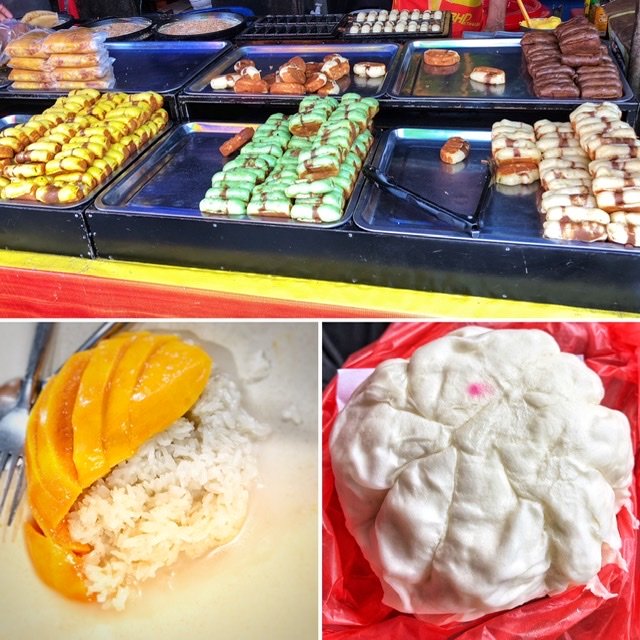
There’s no shortage of cavity inducing street food concoctions in KL.
- Similar taste to a rolled pancake allegedly coming in vanilla, chocolate, mango and other flavors. They somehow all tasted the same to us!
- We’re finally near Mango Sticky Rice Land, the most masterful (and desired) dessert in Thailand. If you’ve never had it, it’s mangoes and rice served with a thick, gooey, coconut milk sugar-laced syrup. OMG.
- A delightfully fun doughy texture food stuffed with coconuty sugar.

The Jalan Alor Night Market featured all kinds of fun goodies….
- Mandy beelined straight for the kebab sticks of veggies while making a classic foreigner mistake. Forgetting to ask the price. We figured it would be dirt cheap because “it was just veggies” and were appalled when the check came to 12 ringitts ($3)
- Seafood selection
- Frogs and some other less identifiable bits and pieces
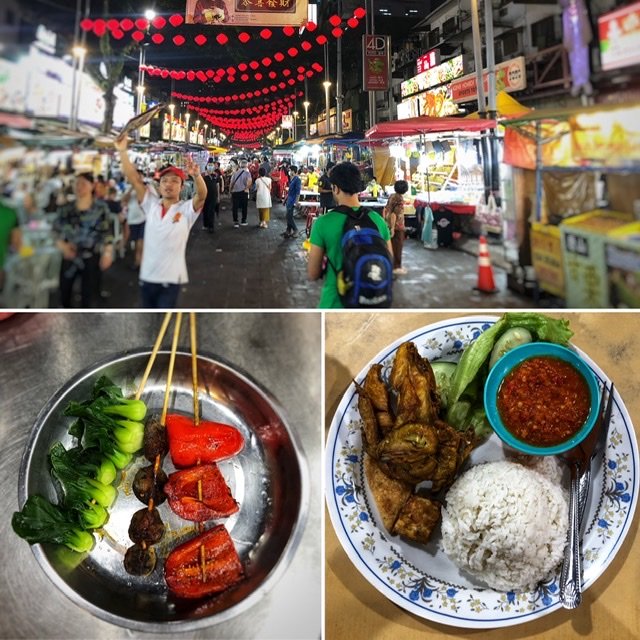
- Street scene at the market. It was quite obnoxious because the restaurant vendors wouldn’t let you walk five seconds without someone shoving a ridiculously large foreigner-friendly picture menu in your face. Fortunately we at least knew to bypass these.
- The overpriced veggies. They were yummy though.
- We quickly found the locals hanging out at the far end of the market away from the entrance. Here we got two entrees, including, Nasi Lemak, and the mango sticky rice for a little over the price of the tourist veggies.
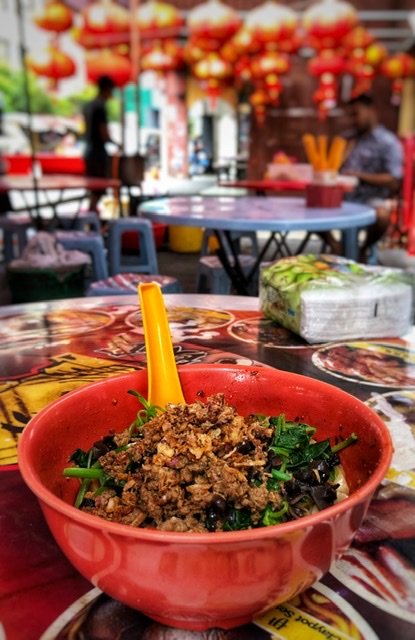
Another pile of delicious street noodles.

- Lode: this vegetarian coconut-based soup was very very edible… a unique offering at the Nyonya restaurant by the name of “Limapulo: Baba Can Cook” which had a fun Old School atmosphere. Nyonya Baba, or Peranakan people, are descendants of Chinese immigrants who came to the Malay Archipelago back in the 15th century. Nyonya is the women and Baba is the men.
- Mee Goreng: a spicy fried noodle dish originating from Indonesia… common at many food, or “hawker” stalls in Malaysia.
- Nyonya Fried Mee Hoon
- Another tasty Indonesian dish, which we don’t remember the name of!
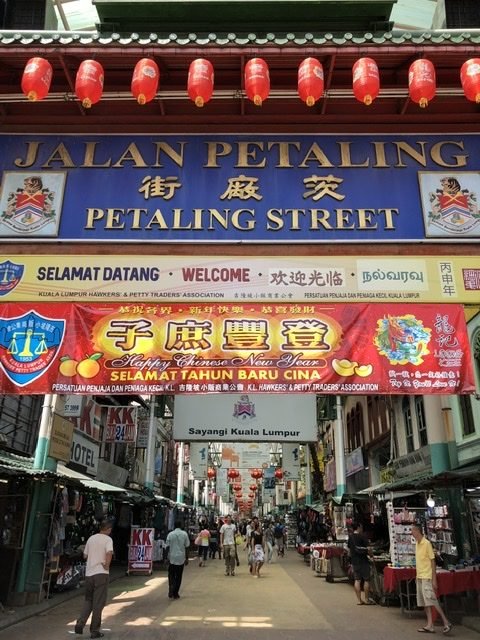
Chinatown & Little India
Kuala Lumpur is a dynamic blend of Asian cultures that over the centuries has stirred together in a culinary, religious, and architectural melting pot. This is especially evident if you visit the neighborhoods of Little India and Chinatown. If you’re craving a little dose of China or India and perhaps feel they’re not quite up to your travel prowess, then Malaysia is a great place to get a wonderful taste of both cultures along with a unique dash of Malay. Kuala Lumpur is super clean and ultra modern with little bursts of Malaysia interspersed throughout the city…
Also, Kuala Lumpur is covered in glam shopping malls which are saturated with every type of capitalistic enterprise you could ask for. If you love shopping you certainly will love Kuala Lumpur! But for us, we loved the more raw and unpolished Petaling Street in Chinatown for our shopping. This well-known shopping district transforms into a lively night market after dark, with hundreds of stalls selling all kinds of stuff at dirt-cheap prices, making it the most happening night market in the city.
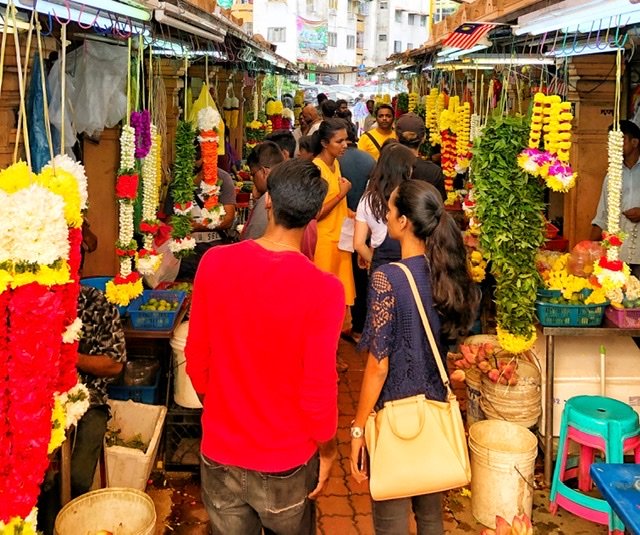
Want a colorful and authentic Indian cultural experience? Head to Little India, aka Brickfields, where you’ll encounter stalls selling vibrant flower garlands, traditional Indian goods such as saris, delightfully whiffable spices, Bollywood music, and local sweet Indian delicacies. Little India is bursting with men on job contracts from India, Bangladesh and Sri Lanka who work at and run the quarter’s restaurants and stores.
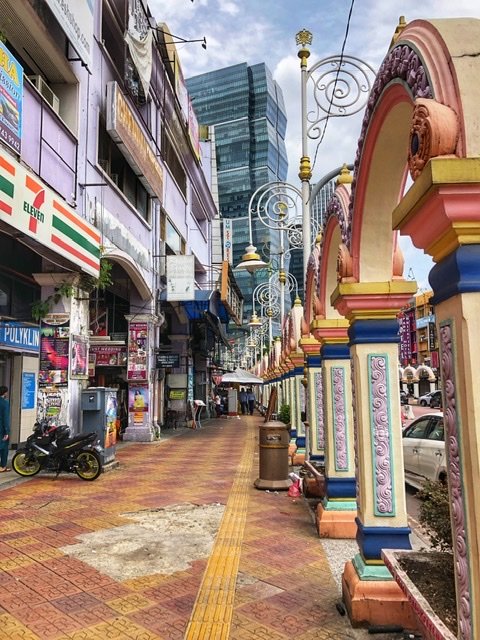
Loved these archways. And yes, we’re in SE Asia now so you’ll be seeing a lot more essential 7-11’s! For us, we used them as a place to purchase and charge our local transportation cards!
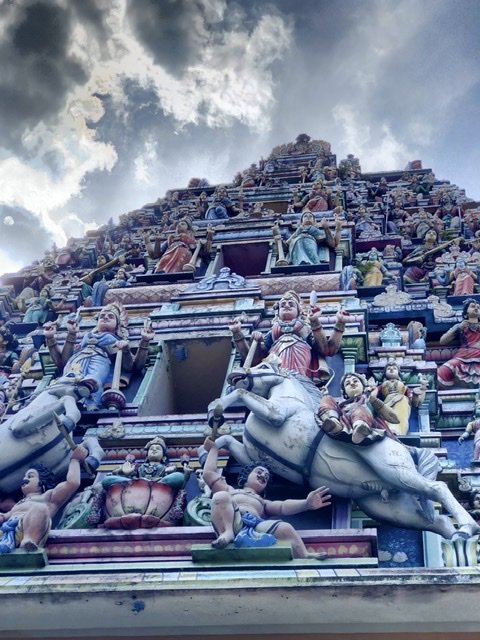
A Hindu shrine in Brickyards.
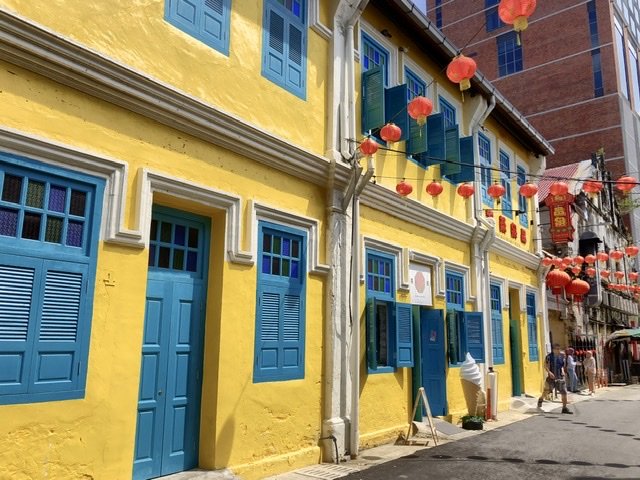
Embracing the color of Chinatown. And btw, we hope you like red! We were lucky to experience the red lanterns hanging everywhere for Chinese New Year which was ongoing throughout our time in KL. The festivities kick off on (Chinese) New Year’s Eve and extend for a full two weeks, which we didn’t realize before coming!
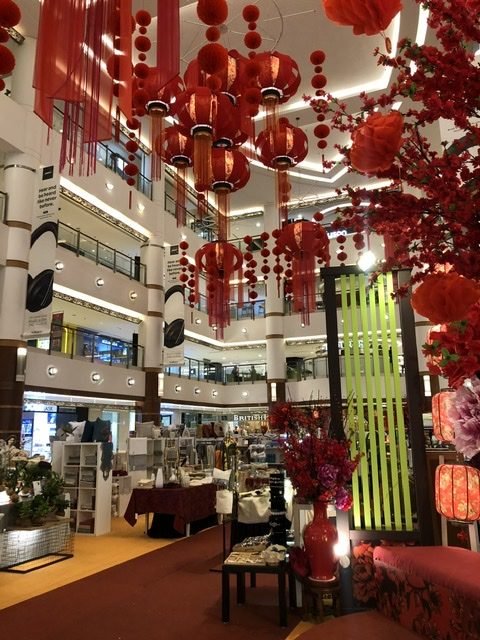
Other things we learned:
-On their New Year’s Eve, they set off more firecrackers than anywhere in the world in the belief that they scare the bad spirits away. Also, families burn fake paper money in honor of their deceased loved ones. In some areas, this behavior is illegal due to pollution and safety regulations, but naturally doesn’t stop people.
-Firecrackers aren’t the only thing that scare the bad spirits away. The color red itself is also an invaluable weapon, and is used in nearly all decorations.
-it is celebrated by 20 % of the world’s population (yes, that’d be China and all those Chinese descendants and foreign nationals that live abroad, as well as the Koreas and Vietnamese)
-It’s the biggest mass migration in the world, which is due to the mentality that everyone should come back home for the New Year’s Eve dinner, and side note: if you don’t have a date, single people often hire them out to stage as a suitable potential mate to satisfy their intrusive families.
-There’s no set date for CNY. It’s determined by the lunar calendar.
-Children receive “lucky” money in red envelopes
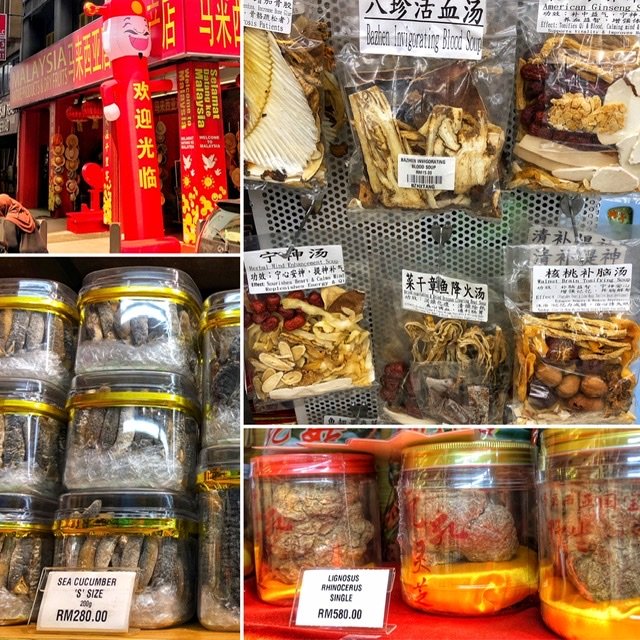
Wandering into a random food store in Chinatown we found an interesting selection of odd (for us) findings.
- The front of the store
- Who doesn’t want a wide selection of… sea cucumbers(!) in various sizes? Yum!
- Tired of your sodium-induced Campbell’s soup lacking in character? Come here to get your “blood invigorating” or “mind enhancement” or “walnut brain tonifying” soup!
- Jury is out on the “rhinoceros” item. Our suspicion (and hope) is that it is dung. Must be some goooood shit. Especially at 580 ringgits or $139.
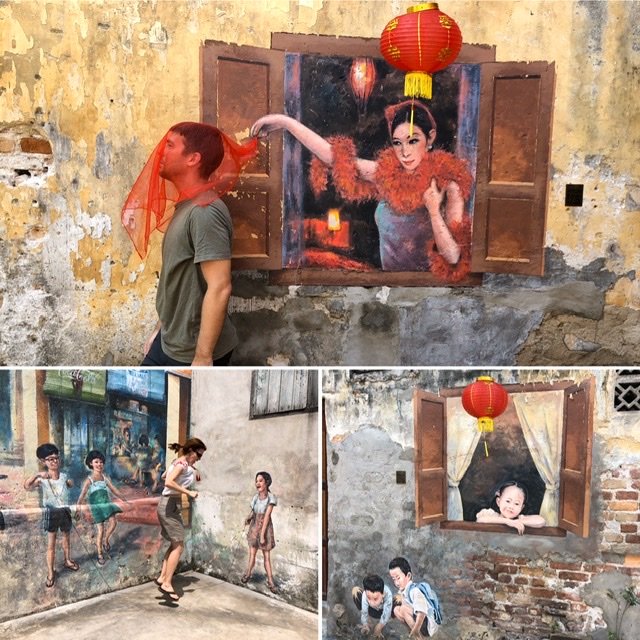
There’s no shortage of interactive, 3D street art in Malaysia!
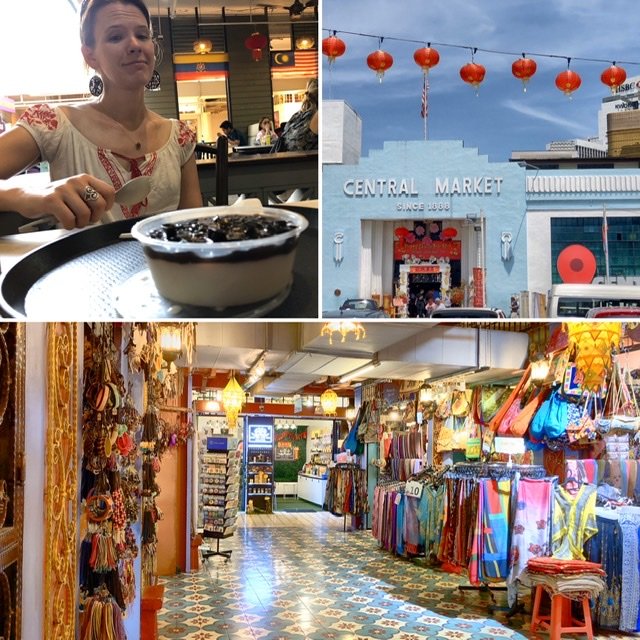
The Central Market from 1888 near Chinatown has come a long way from its beginning as a “wet market” to a rehabbed delightful destination for tourists, shoppers and art lovers. (A wet market is an average produce/meat/goods facility that normally has wet floors.) The floors were definitely dry and were now decorated in stunning tile work. It was a great place to stop for a flavorsome meal and some dessert, which was in this case was Cincau, aka grass jelly. Its mild, slightly bitter taste indeed tasted a bit like grass….jelly. Mandy demonstrates her feelings with an “I don’t think so” face.
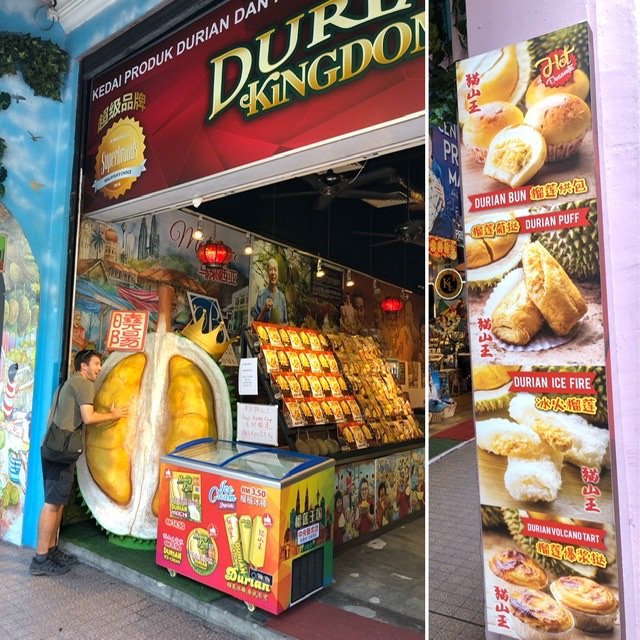
Ah, yes. It wouldn’t be Malaysia without plenty of stinky durian fruit products around to assault/intrigue your nose (depending on your Durian persuasion) as you’re trying to take in countless other strange and exotic food fragrances.
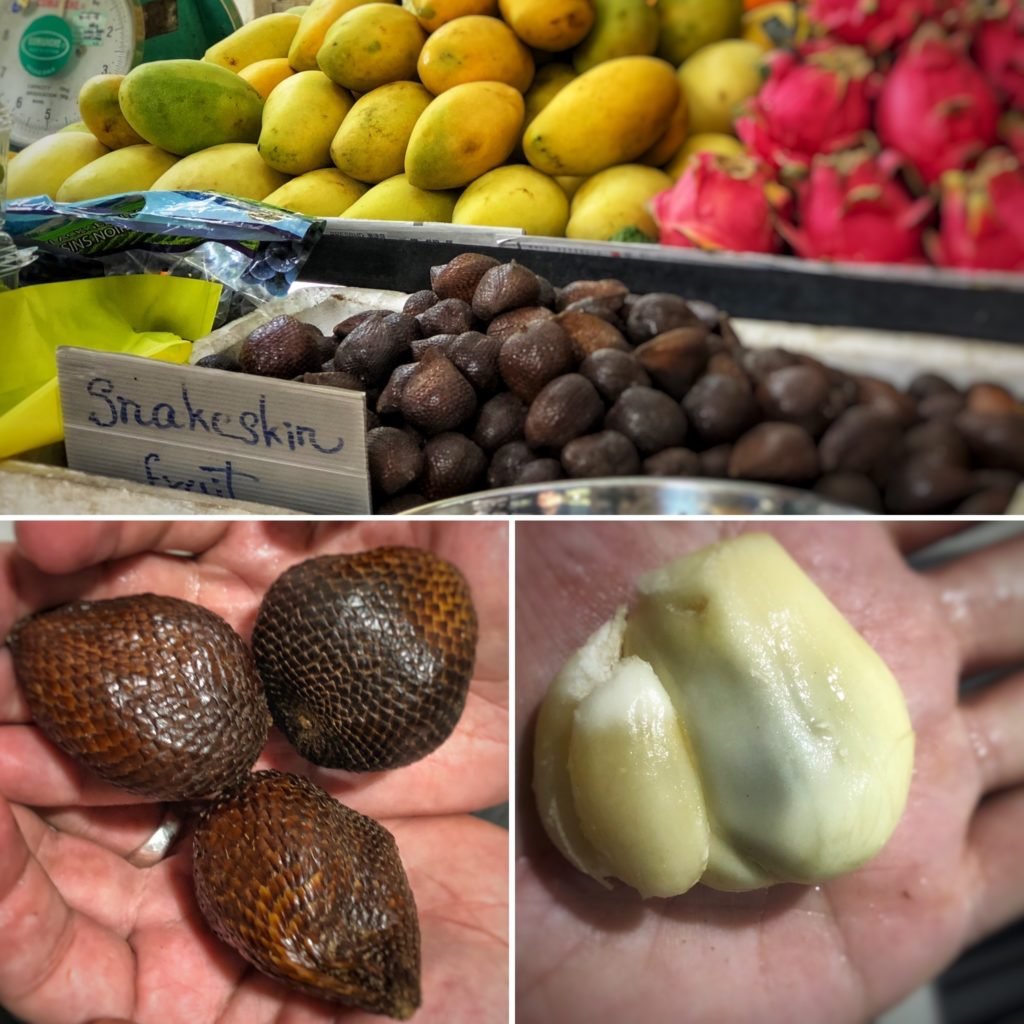
Finding our way into the produce markets is always one of our favorite activities. It gets even more interesting in SE Asia because of the bizarre new fruits and veggies we meet. This time, a snakeskin fruit. True to its name, its brown scales looks identical to the skin of a snake. Hmmm. So how to eat? Google informed us that you cut off one end and then peel all the skin off which is quite crackly, like and egg. Inside are several parts of a segmented smooth white fruit, some with seeds that look like Milk Duds and some without, and some parts with a thin fibrous layer like an onion. It’s kinda crunchy, kinda squeaky and is a bit reminiscent of Juicy Fruit gum, but without the juice. All in all, not bad, but not amazing either. (To our foreign followers, apologies for the processed US product placement?)

Because you can’t go to Malaysia without ordering a delightfully refreshing (and highly sugary) bubble tea. (For the record, the Taiwanese invented it in the 1980’s.) If you’ve never had it, it comes in multiple flavors, like brown sugar, mango, passion fruit, etc. and includes Tapioca pearl balls tossed in the bottom of the cup which you suck up through a very spaciously big straw. Not good for people who might choke easily or little kids (clearly.) They have little nutritional value either. But…are so good. That said, while delicious, bubble tea is a thing NOT to get addicted to ? this one cost us $2.50
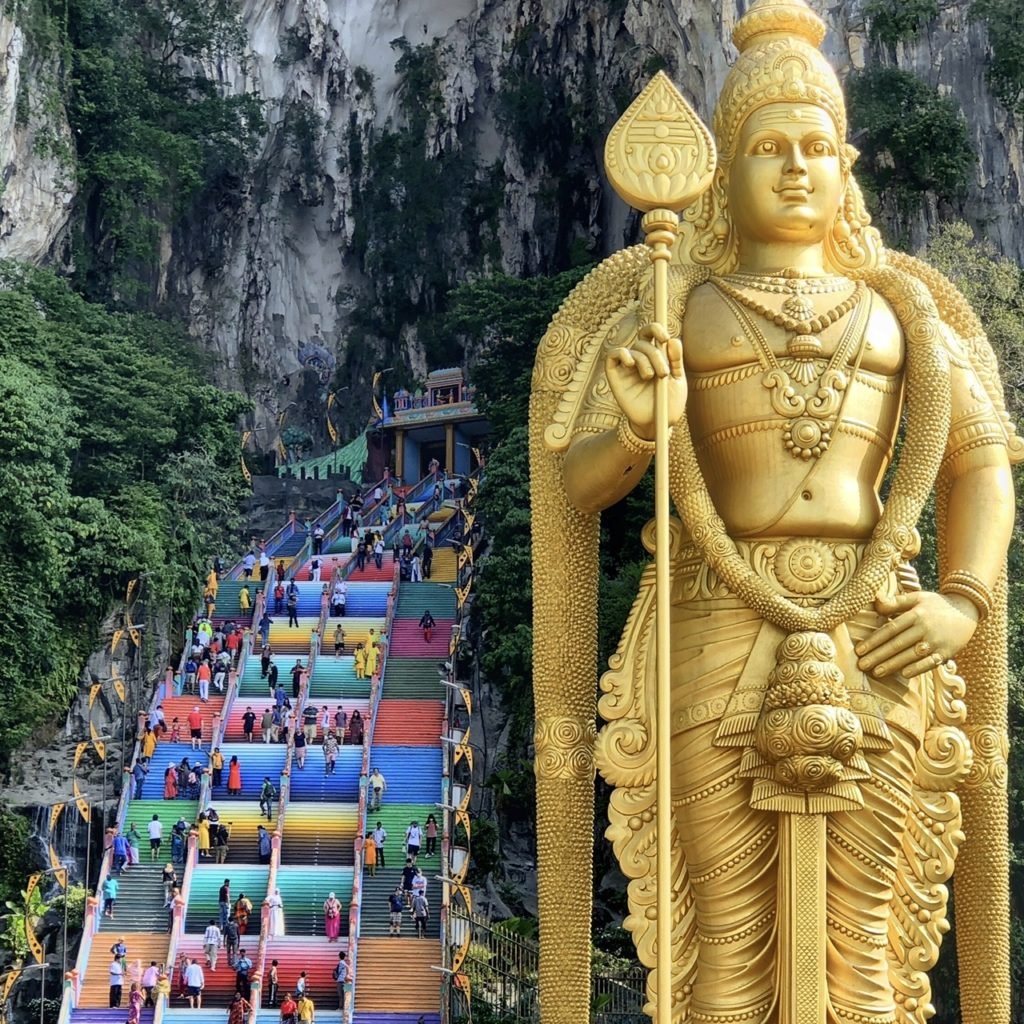
Batu Caves
The Batu Caves, on the outskirts of Kuala Lumpur, are a Hindu spiritual haven which was brought into the limelight by an American explorer in 1891. Soon after, Indian VIPs got the word out that the caves were an ideal place to worship (most likely due to resemblance of the sacred Himalayas.) Soon after, an increasing number of pilgrims visited the cave to pray at the shrine for Lord Murugan, the Hindu god of war.
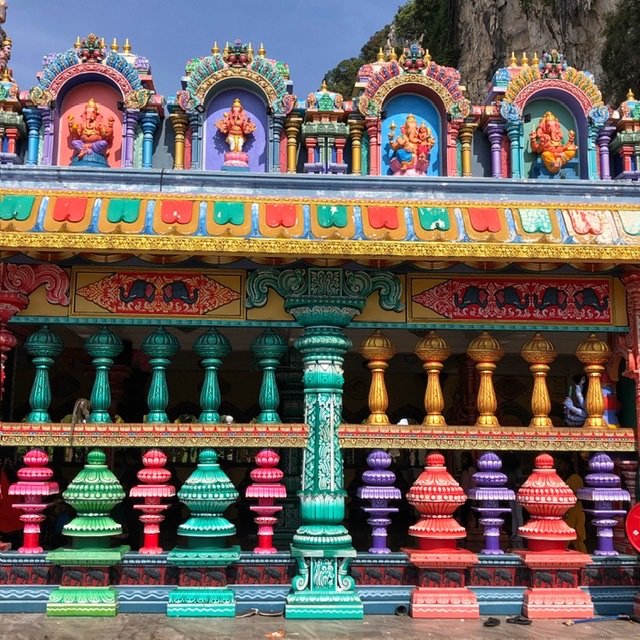
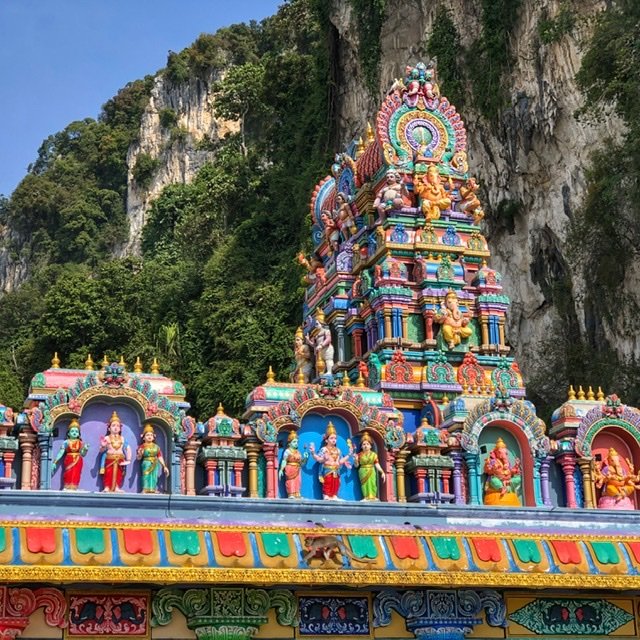
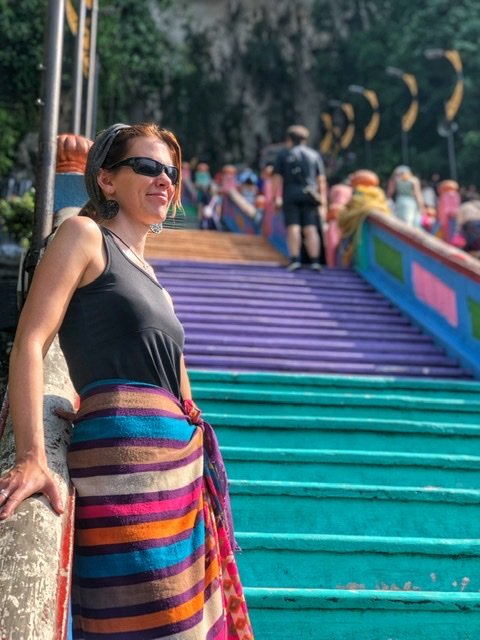
It is a world of vivid color and energy from the temples, to the steps, to the rambunctious macaques.
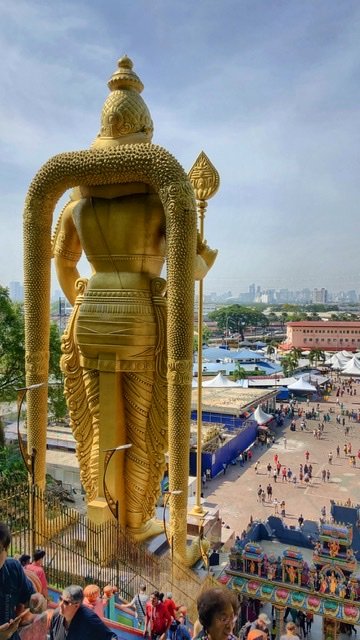
And you’ll also find the largest statue of Lord Murugan in the world. Not to mention, big bonus for us…you can see this stunning religious wonder for free!!
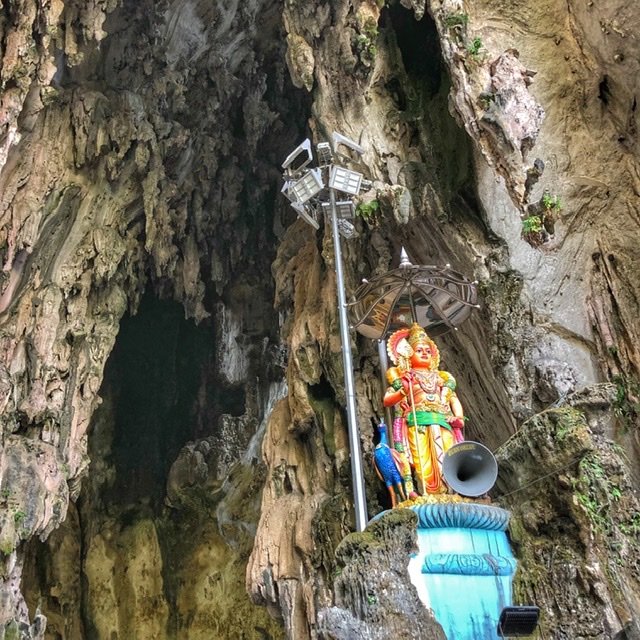
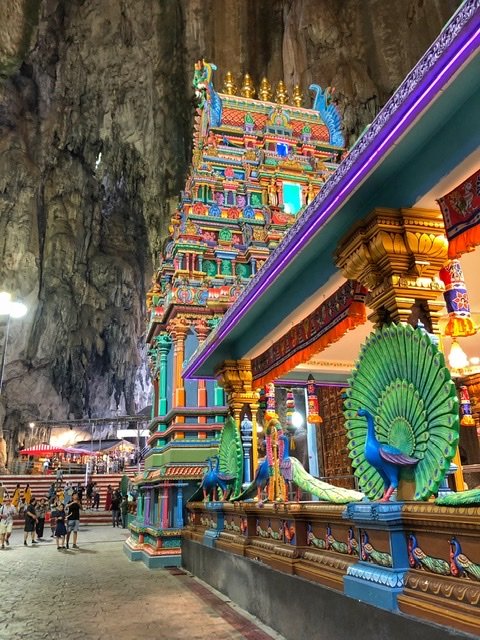
Inside the cave is spacious, deep, and with vaulted ceilings…

…and it’s covered in cheeky, naughty monkeys. The one on the left was licking up a bag of milk that someone had dropped, so he had the cutest milk mustache. The Got Milk? campaign needs to hire him immediately.
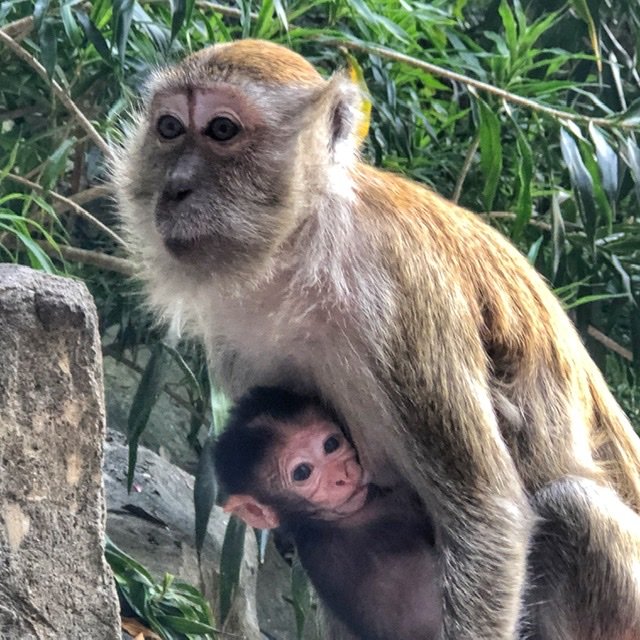
Yes, this is in the running for cutest monkey picture we’ve ever taken.

